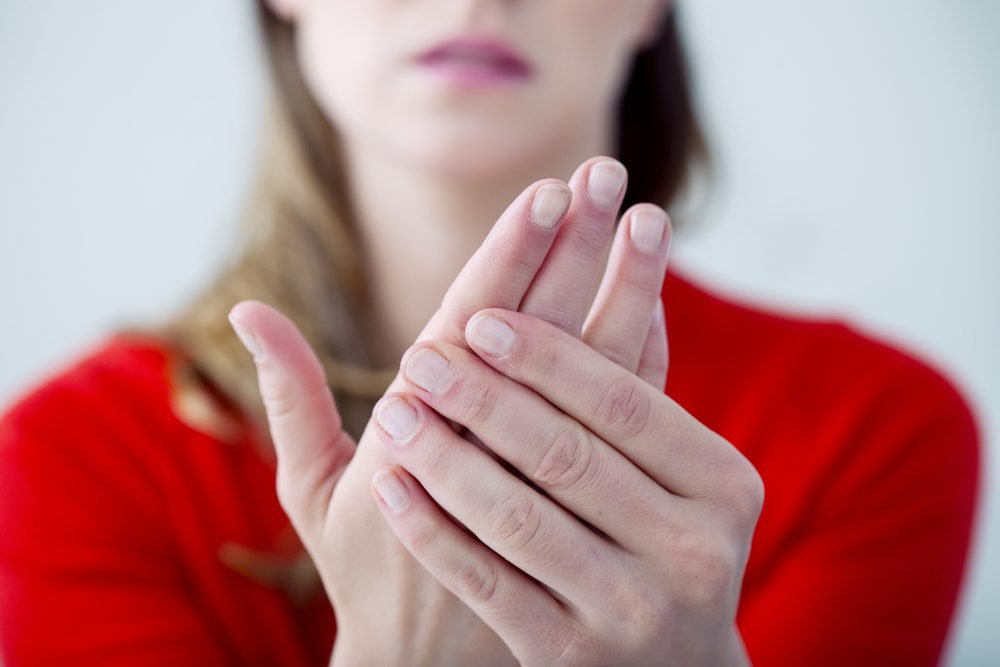Raynaud’s Phenomenon in EDS
Written by |

If you have Ehlers-Danlos syndrome (EDS), you may experience periods of poor blood flow to your fingers and toes that turn them white or blue. These episodes are known as Raynaud’s phenomenon.
Here is more information about this disorder, its relationship to EDS, and suggestions for managing it.
What is Raynaud’s phenomenon?
Raynaud’s phenomenon often develops as a result of an underlying disease like EDS, and is known in such cases as secondary Raynaud’s. It usually affects the fingers and toes, but it can also affect the ears, knees, nose, and nipples.
Cold temperatures often trigger Raynaud’s phenomenon. However, emotional stress is a known other trigger. The lack of blood flow causes the skin to discolor in the affected areas. After warming, or once stress is reduced, discolored sites like finger tips usually turn red, and can swell and tingle, or be painful and throb.
In severe and rare cases, the lack of blood flow can lead to sores on fingers that can progress to gangrene. Gangrene is the death of tissue due to a lack of blood flow, and can require amputation.
How is Raynaud’s related to EDS?
The exact mechanism that causes Raynaud’s phenomenon is not clear. However, researchers think that it occurs because of the blood vessels overreacting to cold and stress. In both instances, the blood vessels narrow considerably, and reduce the amount of blood and oxygen reaching the affected areas.
Raynaud’s phenomenon is often a manifestation of connective tissue disorders such as EDS. A number of different types of EDS are known. All are caused by genetic mutations that affect collagen, the main structural protein in connective tissue. Collagen is a key component of blood vessels, giving them their structure.
How to manage it?
In most instances, patients can manage Raynaud’s phenomenon without the need for specific treatment.
Wearing gloves, socks, and hats help to reduce exposure to cold. Patients should also avoid rapid changes from hot to cold, such as entering an air-conditioned room in the summer, or holding frozen foods with unprotected hands.
If Raynaud’s phenomenon does occur due to cold, you should move to a place where you are warm and massage the affected area. Running affected hands or feet under warm water also helps to increase blood circulation.
Trying to reduce stress also helps to prevent Raynaud’s phenomenon. Potential stress relievers include meditation, getting enough sleep, and exercising. Always check with your physiotherapist before starting to exercise or an exercise program, however, to ensure you are not risk of dislocations or other injuries.
Another way to reduce the chance of Raynaud’s flares is to quit smoking and to avoid second-hand smoke, as both can cause blood vessels to tighten.
How to treat it?
If lifestyle changes and precautions are not working, your doctor may prescribe medications to widen your blood vessels and reduce the frequency of Raynaud’s phenomenon. These include calcium channel blockers and vasodilators.
If these medications are not helping and your symptoms are severe, however, your doctor may suggest onabotulinum toxin A (Botox) injections to block the nerve signals in affected areas like the hands or feet.
Alternatively, the doctor may recommend surgery to remove the small nerves around the blood vessels in affected areas.
Your doctor must weigh the risks against the benefits of either procedure, as EDS patients often have fragile skin and poor wound healing. Anesthesia used during surgery can also carry increased risks.
Last updated: March 3, 2021
***
Ehlers-Danlos News is strictly a news and information website about the disease. It does not provide medical advice, diagnosis, or treatment. This content is not intended to be a substitute for professional medical advice, diagnosis, or treatment. Always seek the advice of your physician or other qualified health providers with any questions you may have regarding a medical condition. Never disregard professional medical advice or delay in seeking it because of something you have read on this website.



